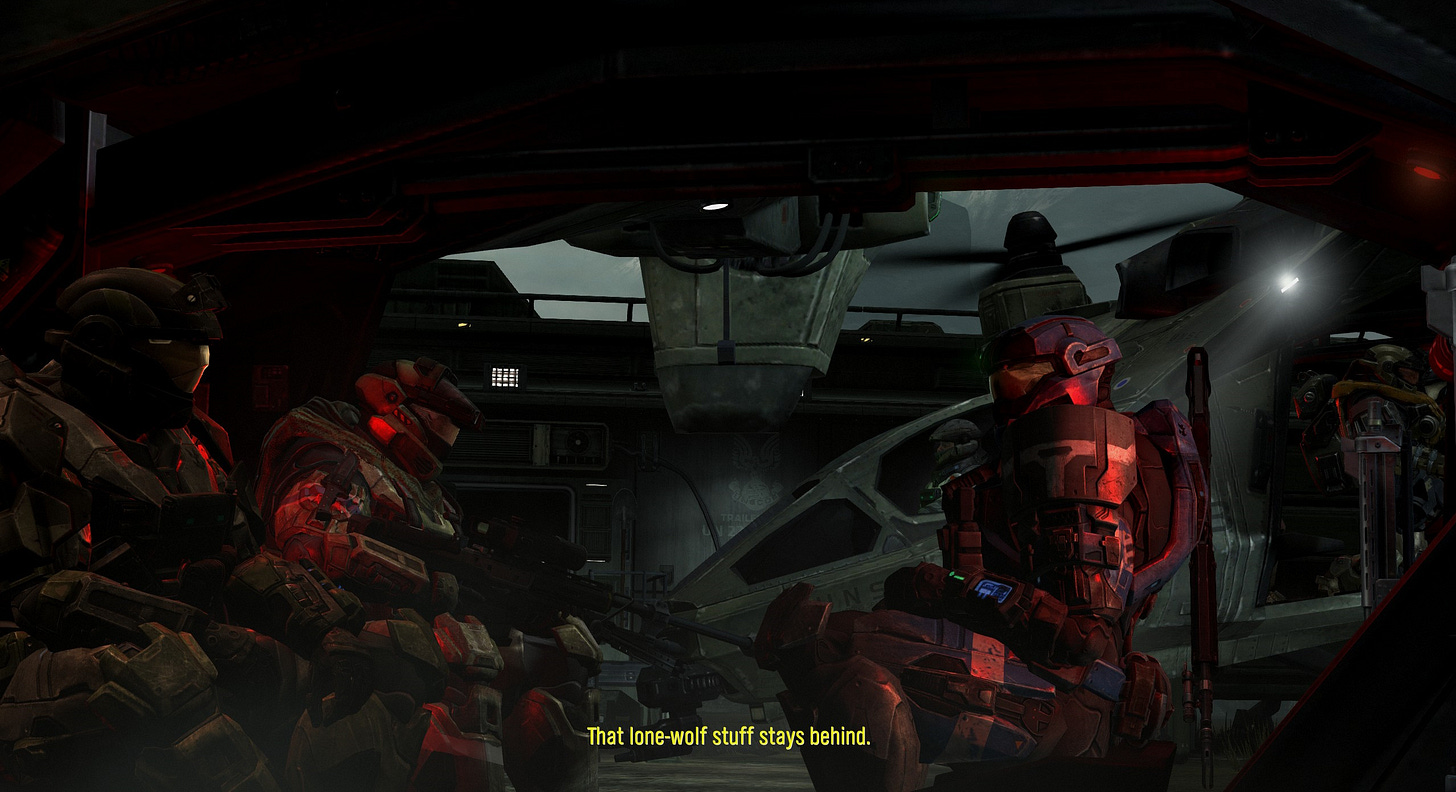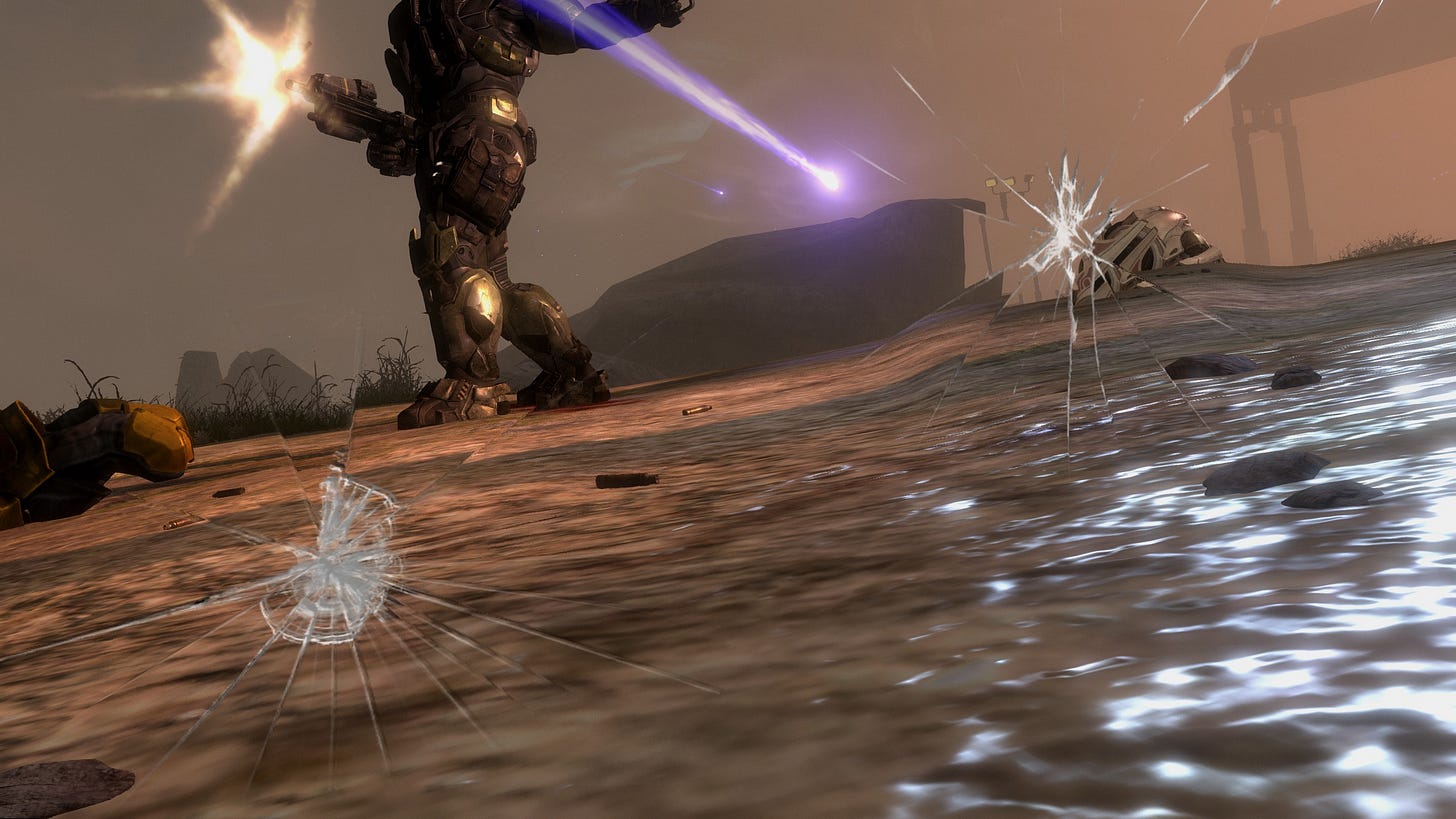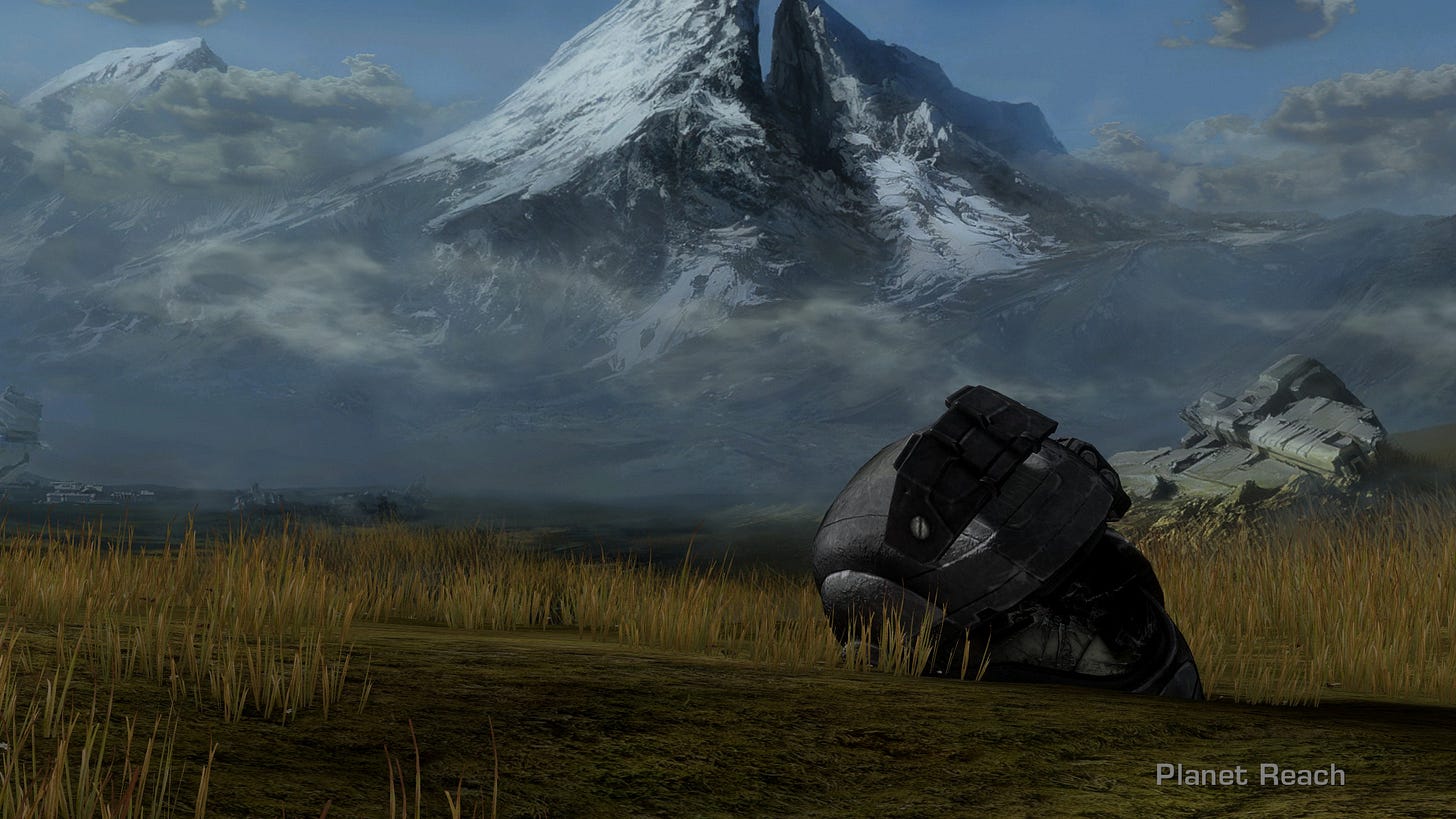I’m writing this one because Halo fans are notoriously awful at understanding basic aspects of storytelling like metaphor and allegory or the simple fact that gameplay is not representative of how Spartans or any of the equipment in the Halo universe would actually function.
I’m also writing it because the rest of you probably think that “games as literature” is a total meme (it probably still mostly is) but we’re gonna do it anyways.
When it comes to Halo: Reach, the questions that come up a lot are “Why did Noble 6 die in that industrial park? Did he1 try to get off the planet? Did he get ambushed? Why didn’t he stay at the Aszod Shipbreaking yard?”
The at first glance unsatisfactory answer is “the narrative demanded he die there” but this is deeper than it sounds and is foreshadowed at several narrative levels. There are many meta storytelling aspects of Halo: Reach and Bungie actually weaves these into the game quite cleverly.
Noble 6 was first introduced in the trailer “A Spartan Will Rise” in which Six is described as a “hyper lethal vector” and how “there is only one other Spartan with that designation” (Implying Master Chief). The backstory given to him largely describes him as a scalpel wielded by ONI for solo wetwork and black ops missions including a stint as a test pilot for a classified UNSC space superiority fighter program.
Crucially, when we first actually see Noble 6 interact with the rest of Noble Team, Carter tells him:
Fast forward to the end of Halo: Reach and Noble Team is about as done as this franchise is right now.
Jorge is dead. Teleported himself into oblivion with a third of a CSO-class supercarrier.
Kat is dead. Gunshot to the head from one of the Devoted Sentries.2
Jun is not dead. But Noble Six has every reason to assume he is given he’s headed deeper into Reach with Dr. Halsey and orders to kill her if she might be captured as the Covenant close the noose on the planet.
Carter is dead. Captain (technically Commander) goes down with the ship and he ran it down mid at a Scarab.
Emile is dead. Unnecessary celebration. One yard penalty. Energy sword through the chest.
Noble 6 may have been told “there is no “I” in Noble team” but there sure as hell is a me in that motherfucker and I am the last man standing.
Maybe Noble Six was going to attempt a shitty anabasis and get off of Reach3 but it’s very likely that was secondary to him trying to do what he does best and take as many alien freaks to hell with him.
If that was the case why not stay at the shipbreaking yards?
I’d wager he had a pretty good reason not to. There’s a good chance that the gun he used to make sure the Pillar of Autumn got off the planet isn’t going to have power for much longer. There’s also a good chance that the Covenant might just glass the facility rather than Leeroy Jenkins their way toward him again.
Either way he wouldn’t have gotten far. The level The Pillar of Autumn begins on August 30, 2552 at 16:52 and the epilogue of Lone Wolf begins on August 30, 2552 at 20:00. That leaves a little over three hours for the entirety of the level The Pillar of Autumn and however long it took for Six (presumably moving on foot) to make it to that industrial park where he made his final stand.
Enough about the stuff happening in the game, let’s move up one narrative level and talk about the story as it exists in our world.
We need to remember that Halo: Reach was Bungie’s last Halo game and they knew it. They made that entire game as a swan song to the franchise they had created and that playable epilogue is the capstone to it.
Every Halo game divides up it’s levels into “rally points” that use sequential NATO phonetic alphabet designators. These are also accompanied by “chapters” where the HUD fades out and title bars pop in with little quips. The most memorable of these is Halo: CE’s Two Betrayals where the title card of “The Gun Pointed at the Head of the Universe” follows the reveal of the Halo installations being a galaxy scale fumigator.
Notably, these quips often break the fourth wall and should not be interpreted as relevant to the narrative of the game itself. They should be interpreted as relevant to the narrative of the game as the player experiences it.
Lone Wolf, the epilogue of Halo: Reach begins with Noble Six assessing his surroundings as dust and ash fill the atmosphere from Covenant glassing operations and Covenant dropships begin circling his location like vultures. Gameplay begins and the player is presented with a title card.
If we load the level Lone Wolf from the main menu, it breaks breaks the trend of sequential designations for rally points in favor of “Rally Point Omega.”
“Rally Point Omega” isn’t a UNSC rally point for the scattered remnants of UNSC forces on Reach. Omega is the last letter in the Greek alphabet for the last level in the last Halo game Bungie would ever make.
When the title card flashes, “There’ll be Another Time…” it is not Noble Six’s internal monologue.
It’s Bungie talking to you.
It’s Bungie telling you that this chapter is done but there’s always all the other memories they made for you.
Noble Six died in that industrial park because the narrative demanded that he die there. He died there because that’s where Bungie’s Halo died.
Noble Six is canonically male. He was born in the city of Damask on the colony Jericho VII on January 30, 2530. He survived the glassing of the colony on February 12, 2535 but was orphaned and recruited into Beta Company of the Spartan-III program.
The Devoted Sentries are the group of Sangheili Zealots repeatedly encountered by Noble Team throughout Halo: Reach and were meant to be a foil to Noble Team but this aspect of storytelling was largely left on the cutting room floor and only elaborated on in text based lore releases.
Funnily enough, this is implied to be what Jun did.

![Sam [REDACTED]'s avatar](https://substackcdn.com/image/fetch/$s_!1Fx0!,w_36,h_36,c_fill,f_auto,q_auto:good,fl_progressive:steep/https%3A%2F%2Fsubstack-post-media.s3.amazonaws.com%2Fpublic%2Fimages%2F9f12d66a-aa73-4a82-90c0-44a6dffc0dc5_2064x1548.jpeg)





